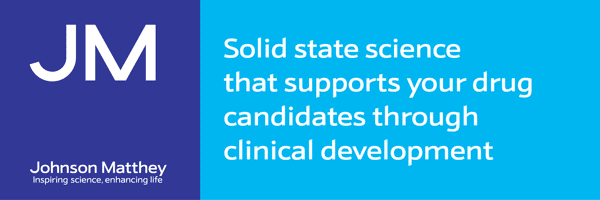Materials Science
Traceability in the leather supply chain 21st May 2018
By Tony Benson, Managing Director, Applied DNA Sciences Europe
Applied DNA Sciences recently announced the completion of its consortium research project with UK-based BLC Leather Technolo

Applied DNA Sciences recently announced the completion of its consortium research project with UK-based BLC Leather Technology Centre, which demonstrated the application and recovery of SigNature DNA tags throughout the leather supply chain, from animals on the farm to the leather-finishing process at the factory. Chemicals Knowledge asked Tony Benson, Managing Director, Applied DNA Sciences Europe, to learn more about the project, and how it will help to improve traceability throughout the leather supply chain.
Why is traceability important for leather?
The leather supply chain, similar to cotton, is truly globalized. Typically, the supply networks of leading brands and retailers comprise multiple tiers across numerous continents. The complexity of these supply chains contributes to difficulties in quality assurance, sourcing and logistics management, and is further exacerbated by the vast networks of independent suppliers, manufacturers and raw material sources across the leather sector.
The leather-making process potentially encompasses a myriad of environmentally and socially sensitive aspects, including animal welfare, labor compliance and environmental pollution. It is also important to note the increasing scope of Non-Governmental Organization (NGO) activity across the leather supply chain. The industry continues to experience increasing scrutiny in relation to deforestation, effluent discharge, use of hazardous chemicals and animal welfare. Inevitably, this critical examination of the industry will grow, as will the NGO’s influence on government policy and public opinion. A concerning development is the adversarial approach of certain NGOs in response to perceived failure or inertia on the part of the brands and retailers in enacting change.
The leather industry is also subject to a suite of national and international regulatory controls, specifically concerning upstream processes. Failure to comply with such controls can manifest in dangerous or defective products, presenting a considerable risk to every party in the supply chain, including the end-user. Moreover, the significant threat posed by environmental and social risks to brand value ensures that such challenges are increasing. Failure to adequately address supply chain challenges could leave companies exposed to undue risk and scrutiny, which may include trade issues and associated prosecution.
These factors serve to emphasize the strategic importance of a thorough supply chain management system. Consequently, traceability is absolutely fundamental in identifying and understanding networks of supply and, ultimately, will deliver robust oversight and management of supply chain challenges.
Traceability of split leather is a particular challenge to the leather industry. This is because split leather is traded as a commodity and as such, is mixed from multiple sources. Any upstream sustainability credits such as Leather Working Group (LWG) ratings or chemical management verification (via a ZDHC (Zero Discharge of Hazardous Chemicals) system or similar) is effectively lost during the split leather trading process. There is ongoing work within the LWG to develop better systems of traceability but these are still largely paper-based or require basic physical stamping systems, which may be open to fraud. The use of SigNature DNA for split leather traceability could provide a stepwise change for brands allowing them to fully demonstrate the provenance of their product, which is fundamental to managing risk in leather supply chains.
What are SigNature DNA tags and what are their main applications?
Products and materials are assigned a secure identity via molecular tagging and other visually identifiable or machine-readable features. Tagging can be implemented anywhere during the lifecycle or supply chain (source, manufacturing, branding). Raw materials, components, finished goods and packaging can be tagged using techniques that verify provenance, integrity and authenticity. Custom molecular tags are optimized for the use case it’s being applied to with minimum disruption to existing manufacturing processes. Signature DNA tags verify source, authentication and provenance.
Can you summarize the main objectives and findings of the recent leather project?
The aims of the research project were to apply and recover SigNature DNA tags throughout the following key processing stages in the leather supply chain:
- Apply DNA to animals on a farm and test for recovery when hides were delivered to a tannery
- Apply DNA at the wet blue stage after initial tanning and test for recovery following leather splitting on both grain leather and drop splits
- Apply DNA during the leather finishing process and test for DNA recovery.
We used two different DNA tags as part of this process.
We are pleased to announce the research project was successful in every aspect, achieving all the stated objectives. The project was completed on schedule and proved the technical feasibility of DNA marking throughout the leather supply chain using SigNature DNA.

How robust are SigNature DNA tags in other applications?
The use of SigNature DNA is being used across an array of use cases in various industries:
- Cotton – It has been used to tag more than 200 million pounds of US cotton and tracked through global supply chains until finished products are on retail shelves.
- Microcircuits – More than one million microcircuits have been tagged for the US Military (Defense Logistics Agency – DLA) to ensure counterfeits are not entering weapon systems.
- Recycled PET (rPET) – Millions of pounds of tagged rPET raw materials are used to make blended bed sheets and towels.
- SigNature DNA has also been piloted on commercial fertilizer to ensure the product is not being blended with non-approved filler materials causing poor yield when used by farmers.
- It can also be applied to pharmaceutics as a PCID to coatings or active ingredients.
- Personal care companies can also apply it to raw materials to prove origin.
Is the technology being used commercially in the leather supply chain?
We are about to commence pilots with clients to tag leather at commercial scale.
What’s next for Applied DNA Sciences?
Following the commercial scale pilots, we plan to roll out the technology to clients. Applied DNA is also advancing its solutions in pharmaceuticals, personal care, textiles and several other industries.
Interview with:
Tony Benson, Managing Director, Applied DNA Sciences Europe.
Applied DNA Sciences is a leading provider of molecular technologies that enable supply chain security, anti-counterfeiting and anti-theft technology, product genotyping and DNA mass production for diagnostics and therapeutics.



